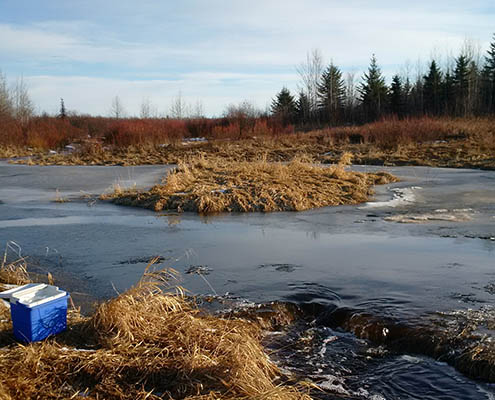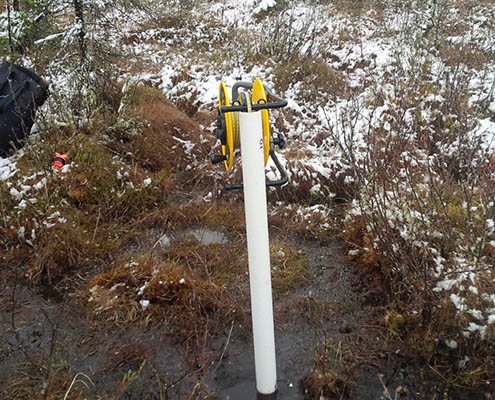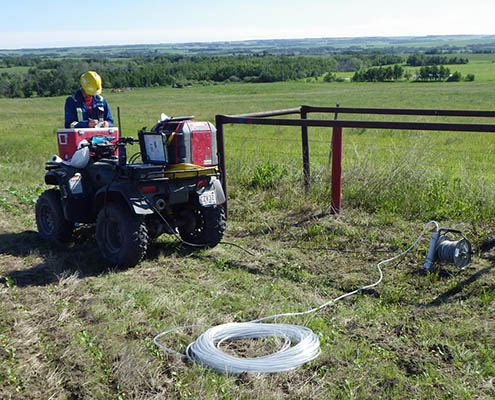Hydrological Assessments & Monitoring
Regulatory agencies and all levels of government are especially concerned with the potential impacts of a spill or new development to groundwater resources. If any possibility of groundwater impacts are identified or could arise, regulators and/or government will recommend a hydrological assessment and hydrological monitoring to ensure contamination has not or does not occur.
Gen7 Hydrological assessments and monitoring services include:
- Water Resources Management:
- Desktop database review of nearby ground and surface water resources.
- Ground and surface water supply evaluations.
- Aquifer characterization through slug tests, step tests, pumping tests, recovery tests and infiltration tests followed by analytical modelling using solution algorithms which fit the characteristics of each aquifer.
- Calculation of the twenty-year sustained yield (using the Farvolden and Modified Moell Methods).
- Well Design and Construction Services:
- Shallow well field design for groundwater environmental assessments and remediation including piezometers, monitoring wells, recovery wells, observation wells, culvert wells, slope stability inclinometers, shallow “small-bore” horizontal wells.
- Well abandonments.
- Well field calculations to determine the optimum number and spacing of wells to provide the desired long-term yield for a water supply system.
- Baseline Monitoring for Coal Bed Methane Production and Hydraulic Fracturing associated with Petroleum Hydrocarbon Extraction:
- Baseline monitoring prior to the initiation of a new coal-bed methane/natural gas (CBN) projects is well established in Alberta by the AER/AEP in directive 035 (subsurface integrity of petroleum/gas wells in Alberta is governed by the ERCB/AER Directive 083).
- Environmental Water Investigations:
- Surface and groundwater sampling for field and laboratory chemical analysis.
- Chemical and Statistical Analysis of Groundwater Chemical Parameters Well field calculations to determine the optimum number and spacing of wells to provide the desired long-term yield for a water supply system.
- Tier II Groundwater Guideline Modification,
- Groundwater Remediation Techniques:
- Generally, groundwater is treated with a pump and treat methodology; however, if the groundwater is shallow and the excavation can be left open (with engineering control for safety) the source area can be rapidly reduced if impacted by light non-aqueous phase liquids (LNAPLs) by using a combination of surface water treatment technologies.
- Water Balance Modelling Studies.




